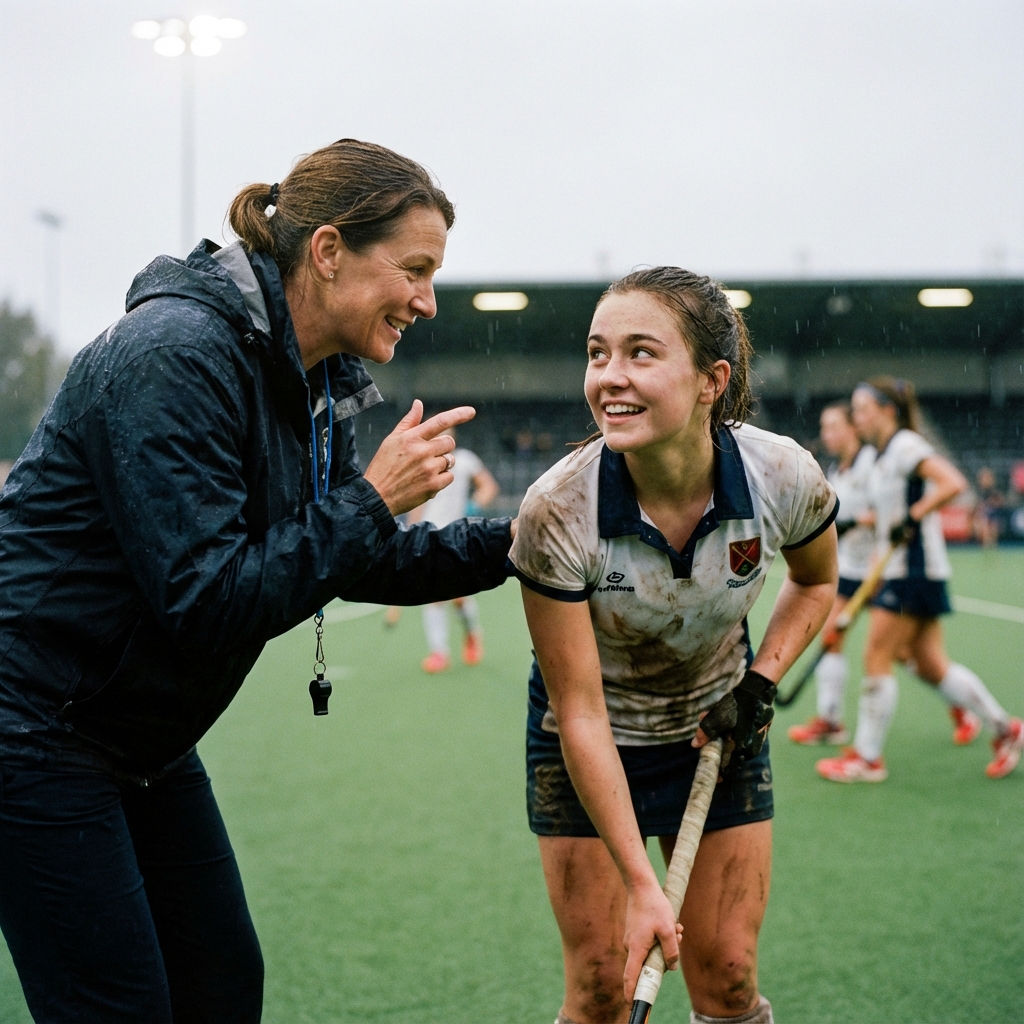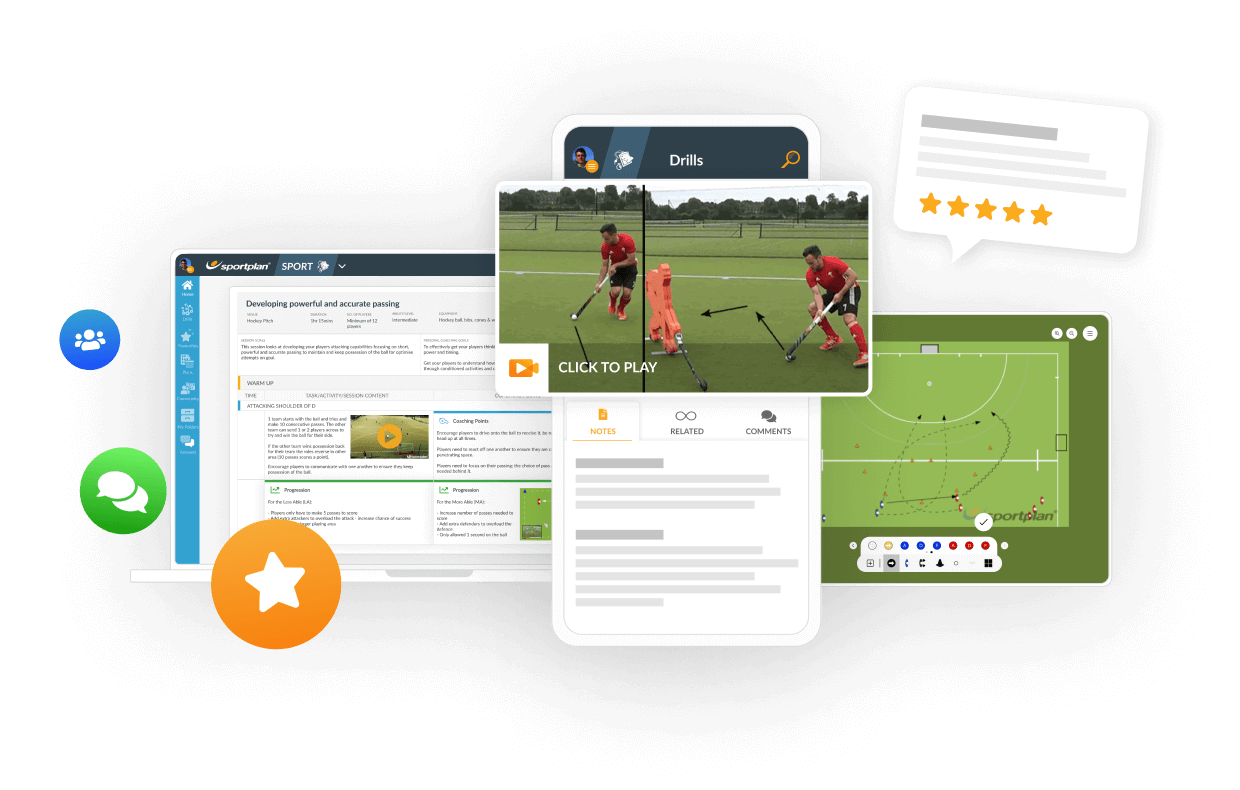How to improve the ball transfer from midfield to forwards?
Dear colleagues,
I am coaching a 1st women team (Argentina) and the system that is working for us very well is 3-1-3-3. Given the quality players we've got in the midfield and attack we try to emphasize our offensive game all the time.
The problem I am struggling to resolve is that the forwards do not get involved in chances to score inside the circle very often. The few chances the forwards have they are able to score but it is our midfielders who most of the time get to the circle in possession with the ball. I would like to see a quick transfer of the ball from the midfielders to the forwards who need to be in touch with the ball more often during the game and have the midfielders supporting the attack rather than being the leaders of the attack.Is there any drill or way to improve this aspect of the game?
Thanks for your time.
Martin





Hi Martin,
The joys, the joys of the no offside rule. All the space in the wrong area of the pitch ie in front of the defence rather than behind it. The defence retreat making it very crowded and difficult to connect midfield players 25m from goal with forwards in the circle through a forest of bodies and sticks.
In technical terms the ability of players to Pre-Scan before receiving means that much of the decision making takes place prior to reception this means after a quick check the ball can be transferred early if an opportunity exists.
The second factor essential to passing into a crowded circle is disguise. Good disguise wrong foots defenders and as well as the obvious improvement in the connection between passer and receiver, further, by throwing the defender off balance miss traps will lead to Penalty Corners.
Forwards need to move late and sharp to space and be balanced at the moment of reception. Move late rather than early and create a wide base the marker has to run round to get to the ball. By passing away from the marking defender, it becomes impossible for the marker to intercept and be balanced. The key issue is passers will see attackers as marked and need to build confidence in giving it to a marked player.
From a strategic viewpoint it is easy to stand in space behind the defence but not be available for a pass. Forwards starved of possession tend to migrate towards the ball reducing each otherâs space. Using the depth of the circle is logical and persuading players to think of others and CONNECT by looking at each other is a long term project but one well worth the investment of time. Movement around the top of the circle needs to create a channel to pass the ball through. Width needs to be retained stretching the defence as far as possible from circle edge to circle edge by taking up a position between the dotted line and circle (a forward or a midfield player) enabling the forward with the first touch to enter the circle with the odds stacked in their favour.
It is no coincidence that given these difficulties that most open play goals are scored on the counter attack. As I read a long while ago in a Basketball coaching book. Attack a deep lying zone before it sets up âFast Breakâ: this brings us back to my first point, Pre-Scan and move the ball early and exploit space before it disappears.
Hi Martin,
The joys, the joys of the no offside rule. All the space in the wrong area of the pitch ie in front of the defence rather than behind it. The defence retreat making it very crowded and difficult to connect midfield players 25m from goal with forwards in the circle through a forest of bodies and sticks.
In technical terms the ability of players to Pre-Scan before receiving means that much of the decision making takes place prior to reception this means after a quick check the ball can be transferred early if an opportunity exists.
The second factor essential to passing into a crowded circle is disguise. Good disguise wrong foots defenders and as well as the obvious improvement in the connection between passer and receiver, further, by throwing the defender off balance miss traps will lead to Penalty Corners.
Forwards need to move late and sharp to space and be balanced at the moment of reception. Move late rather than early and create a wide base the marker has to run round to get to the ball. By passing away from the marking defender, it becomes impossible for the marker to intercept and be balanced. The key issue is passers will see attackers as marked and need to build confidence in giving it to a marked player.
From a strategic viewpoint it is easy to stand in space behind the defence but not be available for a pass. Forwards starved of possession tend to migrate towards the ball reducing each otherâs space. Using the depth of the circle is logical and persuading players to think of others and CONNECT by looking at each other is a long term project but one well worth the investment of time. Movement around the top of the circle needs to create a channel to pass the ball through. Width needs to be retained stretching the defence as far as possible from circle edge to circle edge by taking up a position between the dotted line and circle (a forward or a midfield player) enabling the forward with the first touch to enter the circle with the odds stacked in their favour.
It is no coincidence that given these difficulties that most open play goals are scored on the counter attack. As I read a long while ago in a Basketball coaching book. Attack a deep lying zone before it sets up âFast Breakâ: this brings us back to my first point, Pre-Scan and move the ball early and exploit space before it disappears.
Thank you Jon for your input. Nice summary of tips to excersise.











